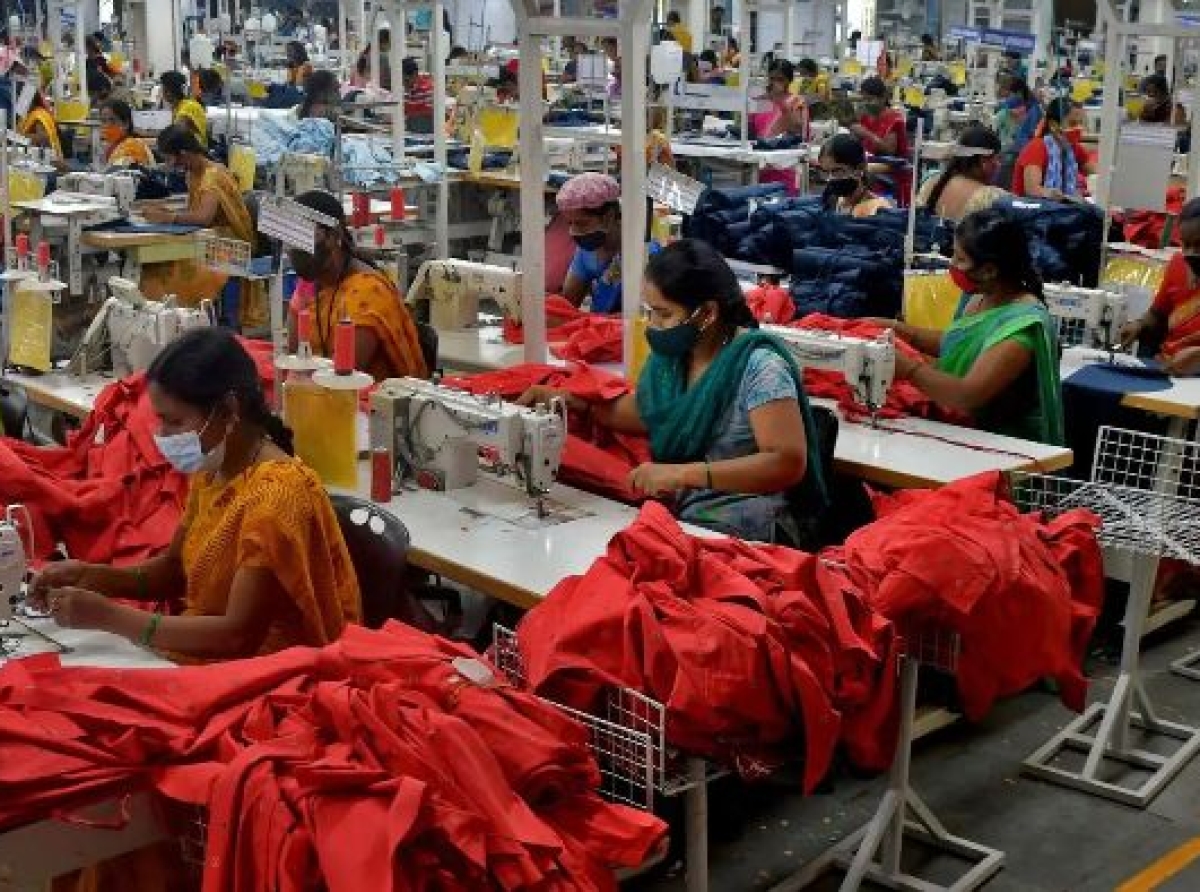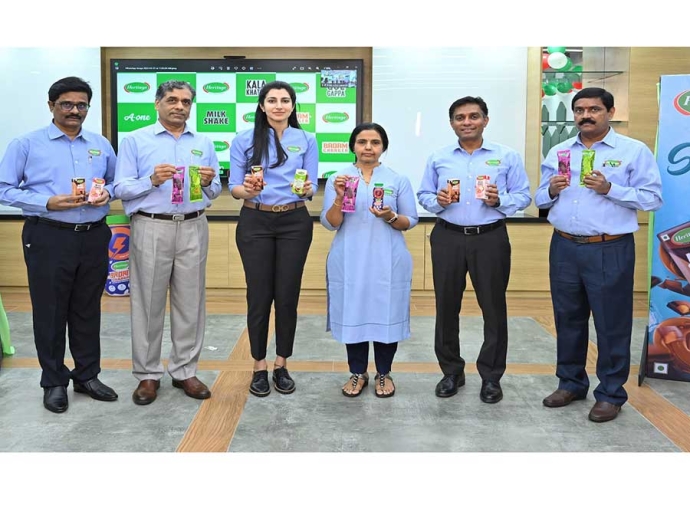23 May 2023, Mumbai
The diversity and richness of India's textile potential have transcended national boundaries throughout history. India is proud of its long history in textiles, from the presence of fine, traditional handloom and handicrafts to the fabrics produced in capital-intensive factories.
Currently, India's textile and clothing sector is characterized by radical innovation, moving markets, evolving supply chains and distribution methods, and a gradual shift towards manufacturing that is ethical and sustainable.
Size & scale
The potential for this second-largest business in the world to quadruple its current 5% share of global trade over the next five years is enormous. India's strengths are traditionally produced textiles and natural fibers, where it ranks first in the world for cotton production and second for polyester and silk.
Due to its ability to adapt, this industry—often referred to as a change agent—alone has the potential to provide 70 employment for every INR 1 crore ($ 132,426) invested, as opposed to the 12 jobs created on average in other industries. An in-depth analysis of India's textile and clothing industry is provided in this research, along with suggestions for maximizing its growth potential.
Growth trajectory
The estimated growth of the global apparel market from its present size of $1.9 trillion to more than $2.6 trillion. The CAGR for the worldwide demand for garments is predicted to be 5%. India and China are expected to develop at a consistent CAGR of 12% and 10%, respectively, over the coming years, outpacing the global average of 5% among the top five markets for apparel.
By 2025, it is anticipated that China will surpass Japan to take the top spot on this list as the greatest apparel consumer in the world, with a market worth $ 450 billion.
India will pass Japan to take the fourth spot on this list, with a market worth over $ 160 billion. India was the world's fifth-largest exporter of textiles and clothing in 2018–19, trailing only Bangladesh and Germany, whose exports totaled $35 billion and $34 billion, respectively.
Global view
The textile and apparel industry has shown sustained expansion in recent years in terms of worldwide trade. The global textile and apparel market was worth $823 billion in 2018 and has increased at a CAGR of 4% since 2005. With a 57% share of the overall textile and apparel trade, apparel was the most traded segment in the industry.
Since 2005, the exports in this category have also increased at a CAGR of 4%. Closely following garments in importance was fabric, which made up 19% of the overall textile and apparel trade and saw a 3% CAGR in export growth since 2005.
It is anticipated that the worldwide trade in textiles and apparel would experience comparable growth in the next years, increasing from its current value of $ 823 billion to $ 1 trillion in 2025, rising at a promising rate of over 3% when compounded annually.
An overview
The domestic textile and apparel market in India is currently valued at over $100 billion and is predicted to develop at a CAGR of 12% to reach a value of $223 billion by 2021.
India's current garment demand is $78 billion, with domestic manufacturers accounting for close to 74% of the country's overall textile and apparel market.
Apparel sector-A quick perspective
The Indian apparel market is experiencing significant growth, with an estimated revenue of US$96.47 billion in 2023 and an expected annual growth rate of 3.34% (CAGR 2023-2027).
The largest segment, Women's Apparel, is projected to contribute US$43.65 billion to the market volume in 2023. This growth is driven by several factors. India's expanding population and increasing disposable income have led to a diverse consumer base with varying preferences.
The market thrives on the fusion of traditional clothing, deeply rooted in cultural significance and the demand for modern styles influenced by Western trends and urbanization.
E-commerce platforms have transformed the retail landscape, making shopping convenient and accessible for consumers across the country.
Additionally, regional variations in climate, festivals, and social occasions create distinct market segments, necessitating customized strategies.
Success in this industry requires a comprehensive understanding of the cultural, demographic, and economic dynamics, enabling effective strategic positioning, product assortment, pricing, and distribution channels.
Textile production capabilities, technological advancements, and evolving fashion trends also play a significant role in shaping the Indian apparel market.
Projections
The global apparel market is anticipated to witness a Compound Annual Growth Rate (CAGR) of 5.8% during the forecast period. Despite the challenges posed by the COVID-19 pandemic, the industry is byfar fully revived as restrictions have been removed.
The apparel/garment manufacturing sector is expected to benefit from the surge in online shopping, allowing manufacturers to expand their customer base geographically.
E-commerce platforms have particularly facilitated the sales of traditional garments in countries like India, granting increased exposure to previously localized producers.
Demographics
Impact analysis; Factors such as rising per capita income, supportive demographics, and a shift in consumer preferences, and choices toward branded products are driving market demand.
The growing adoption of a luxury lifestyle among millennials has boosted the demand for high-end apparel. ALBEIT! the apparel market is mature, and evolving fashion trends, and changes in the retail landscape have contributed to its continued growth.
Apparel trade fluctuations
Considering the intense competition, apparel companies often form alliances to strengthen their market presence. Successful advertising strategies and a focus on specialized markets enable these companies to generate higher revenues. The clothing/apparel market is segmented by end users (men, women, and children) and types (formal wear, casual wear, sportswear, and nightwear, etc). The geographic spread goes like this, it is divided into North America, Europe, Asia-Pacific, South America, and the Middle East & African nationalities, with market sizes and forecasts provided for every single segment in terms of USD million (value terms).
Technical Textiles-Sweat spot
Technical textiles, one of the fastest-growing sub-segments with a CAGR of 12%, are also experiencing significant growth in India, where their market size is now estimated at $. India is a rapidly developing industrial nation having access to vital resources including land, water, power, and labor, as well as favorable regulatory environments for the growth of the textile and garment sectors.
To attain higher growth rates than in the recent past, the textile sector can take advantage of its advantages, including a huge base of raw materials, a robust manufacturing infrastructure, the availability of a large labor force, and a presence along the entire manufacturing value chain.
A nation with a textile legacy
India is one of the few textile-producing nations in the world where both natural and synthetic fibers are used at every stage of the textile value chain, from fiber/filament to garment production.
Contrarily, all of the other countries in the region—aside from China—have fragmented value chains that are primarily focused on the final product and reliant on those other nations for fabric and yarn.
The country's geographical diversity and the presence of numerous sizable integrated firms have proven to be a strategic advantage in preserving the presence of the whole industrial value chain. India ranks first in the world for the production of cotton, second for silk, third for viscose, and fourth for acrylic and nylon.
It also ranks second for the manufacture of polyester and silk. This extensive raw material base has effectively supported the growth of the downstream manufacturing value chain and secured India's position to take advantage of both domestic and global opportunities.
Latest Publications


































